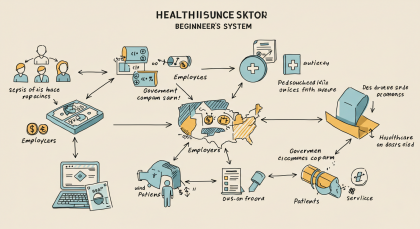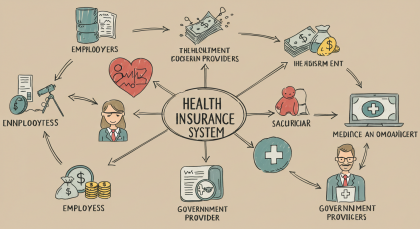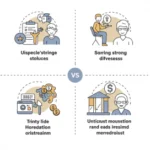The United States health insurance system can seem incredibly complex, especially for those new to navigating healthcare coverage. Unlike many other developed countries with universal healthcare systems, the U.S. operates on a mixed model that combines private insurance, government programs, and individual responsibility. Understanding how this system works is crucial for making informed decisions about your healthcare coverage and managing medical expenses effectively.
What is Health Insurance?
Health insurance is a contract between you and an insurance company that helps cover the cost of medical care. In exchange for monthly payments called premiums, the insurance company agrees to pay for a portion of your healthcare expenses when you need medical services. This financial protection prevents you from facing overwhelming medical bills that could lead to bankruptcy or force you to go without necessary care.
The fundamental principle behind health insurance is risk pooling. Insurance companies collect premiums from many healthy individuals to create a large pool of money that can be used to pay for the medical expenses of those who become sick or injured. This system allows the financial risk of healthcare to be spread across many people rather than falling entirely on individuals.

Types of Health Insurance Plans
Health Maintenance Organizations (HMOs)
HMO plans typically offer the most affordable premiums but come with the most restrictions. Under an HMO, you must choose a primary care physician (PCP) who serves as your main doctor and coordinates all your healthcare. If you need to see a specialist, you must first get a referral from your PCP. HMO plans generally only cover care from doctors and hospitals within their network, except in emergency situations.
The advantage of HMO plans is their lower cost and emphasis on preventive care. Since your PCP manages your overall health, there’s often better coordination between different healthcare providers. However, the downside is less flexibility in choosing doctors and potentially longer wait times for specialist appointments.
Preferred Provider Organizations (PPOs)
PPO plans offer more flexibility than HMOs but typically come with higher premiums and out-of-pocket costs. With a PPO, you don’t need to choose a primary care physician or get referrals to see specialists. You can visit any doctor or hospital, though you’ll pay less if you use providers within the plan’s network.
PPO plans are popular because they provide a good balance between cost and flexibility. You have the freedom to see specialists directly and can even get some coverage for out-of-network providers, though you’ll pay significantly more for these services.
Exclusive Provider Organizations (EPOs)
EPO plans combine elements of HMOs and PPOs. Like PPOs, you don’t need referrals to see specialists. However, like HMOs, you typically must stay within the plan’s network to receive coverage, except in emergencies. EPO plans often have lower premiums than PPOs while still offering more flexibility than HMOs.
Point of Service (POS) Plans
POS plans are hybrid plans that require you to choose a primary care physician like an HMO, but allow you to go outside the network for care like a PPO. You’ll need referrals from your PCP for most services, but you have the option to see out-of-network providers at a higher cost.
Key Health Insurance Terms
Understanding health insurance terminology is essential for choosing the right plan and managing your healthcare costs. Here are the most important terms you need to know:
Premium is the monthly amount you pay for your health insurance coverage, regardless of whether you use medical services. Even if you don’t visit a doctor all year, you still need to pay your premium to maintain coverage.
Deductible is the amount you must pay out-of-pocket for covered healthcare services before your insurance begins to pay. For example, if you have a $2,000 deductible, you’ll pay the first $2,000 of covered medical expenses yourself, and then your insurance will start covering costs according to your plan’s terms.
Copayment (copay) is a fixed dollar amount you pay for specific services, such as $25 for a doctor’s visit or $10 for a prescription. Copays are usually due at the time you receive the service.
Coinsurance is the percentage of costs you pay for covered services after you’ve met your deductible. For instance, if your plan has 20% coinsurance, you’ll pay 20% of the cost of covered services, and your insurance will pay the remaining 80%.
Out-of-pocket maximum is the most you’ll have to pay for covered services in a plan year. Once you reach this limit, your insurance will pay 100% of covered services for the rest of the year. This provides important financial protection against catastrophic medical expenses.
How to Get Health Insurance
Employer-Sponsored Insurance
The majority of Americans receive health insurance through their employers. Employer-sponsored plans are often the most affordable option because employers typically pay a significant portion of the premium costs. These plans also benefit from group rates, which are generally lower than individual insurance premiums.
If your employer offers health insurance, you’ll typically choose from several plan options during an annual enrollment period. Your employer will deduct your portion of the premium from your paycheck, often on a pre-tax basis, which can provide additional savings.
Individual Insurance Plans
If you don’t have access to employer-sponsored insurance, you can purchase individual health insurance plans. The primary marketplace for individual plans is the Health Insurance Marketplace, also known as the Exchange, established by the Affordable Care Act (ACA).
The Marketplace operates on both federal and state levels. Some states run their own marketplaces, while others use the federal marketplace at HealthCare.gov. During the annual open enrollment period, typically from November to January, you can shop for and enroll in Marketplace plans.
Government Programs
Several government programs provide health insurance for specific populations:
Medicare is a federal program that provides health insurance for people 65 and older, as well as younger people with certain disabilities or end-stage renal disease. Medicare has different parts that cover different services, including hospital care, medical services, and prescription drugs.
Medicaid is a joint federal and state program that provides health coverage for low-income individuals and families. Eligibility requirements vary by state, but the program generally covers children, pregnant women, parents, seniors, and people with disabilities who meet income requirements.
CHIP (Children’s Health Insurance Program) provides low-cost health coverage for children in families that earn too much money to qualify for Medicaid but can’t afford private insurance.
Understanding Your Benefits
Once you have health insurance, it’s important to understand what services are covered and how much you’ll pay for different types of care. Most health insurance plans are required to cover essential health benefits, including:
- Ambulatory patient services (outpatient care)
- Emergency services
- Hospitalization
- Maternity and newborn care
- Mental health and substance use disorder services
- Prescription drugs
- Rehabilitative services and devices
- Laboratory services
- Preventive and wellness services
- Pediatric services
Preventive care services, such as annual check-ups, vaccinations, and certain screenings, are typically covered at 100% with no cost-sharing, meaning you won’t pay a copay, coinsurance, or deductible for these services.
Managing Healthcare Costs
Even with health insurance, you’ll likely have out-of-pocket costs for medical care. Here are strategies to manage these expenses:
Use in-network providers whenever possible. Going out-of-network can significantly increase your costs, and some plans don’t provide any coverage for out-of-network care except in emergencies.
Take advantage of preventive care to catch health issues early when they’re less expensive to treat. Since preventive services are covered at 100%, there’s no financial reason to skip these important health maintenance activities.
Consider generic medications when possible. Generic drugs contain the same active ingredients as brand-name drugs but cost significantly less. Your insurance plan may also have a formulary that lists preferred medications with lower copays.
Understand your plan’s rules for things like prior authorization, step therapy, and referral requirements. Following these rules can help you avoid unexpected costs and claim denials.
Common Challenges and Solutions
The U.S. health insurance system presents several challenges that consumers should be prepared to address:
Network restrictions can limit your choice of healthcare providers. Before choosing a plan, verify that your preferred doctors and hospitals are in the plan’s network. If you have ongoing relationships with specific providers, this should be a key factor in your decision.
Prior authorization requirements mean that your insurance company must approve certain services before you receive them. This can delay care and create administrative burdens. Understanding your plan’s prior authorization requirements can help you plan ahead for needed services.
Claim denials can occur when insurance companies refuse to pay for services they believe are not covered or not medically necessary. If your claim is denied, you have the right to appeal the decision. Many denials are overturned on appeal, so it’s worth pursuing if you believe the denial was incorrect.
Surprise billing can occur when you receive care from out-of-network providers, even at in-network facilities. Recent legislation has provided some protections against surprise billing, but it’s still important to verify that all providers involved in your care are in your network.

Looking Forward
The U.S. health insurance system continues to evolve, with ongoing debates about cost, access, and quality of care. Recent trends include the growth of high-deductible health plans paired with health savings accounts, increased emphasis on value-based care, and efforts to improve price transparency in healthcare.
As a consumer, staying informed about your health insurance options and rights is crucial. Take advantage of resources like your state’s insurance department, healthcare.gov, and your employer’s benefits department to get help understanding your options and making the best choices for your situation.
Understanding the U.S. health insurance system takes time and effort, but this knowledge empowers you to make informed decisions about your healthcare coverage. By carefully evaluating your options, understanding your benefits, and actively managing your healthcare costs, you can navigate this complex system more effectively and ensure you have the coverage you need to maintain your health and financial security.

Hi, I’m Hibiki — the writer behind HealthManual.net.
I cover health insurance news, wellness tips, and insightful analysis of pharmaceutical and healthcare stocks. My goal is to simplify complex topics and make health and finance information more accessible to everyone.
Thanks for reading — I hope you find the content helpful and reliable.















